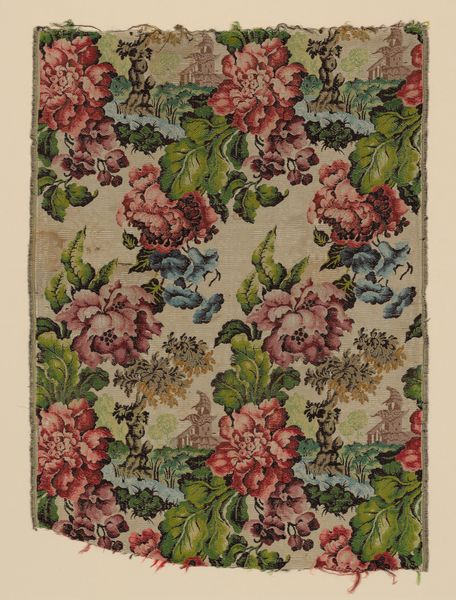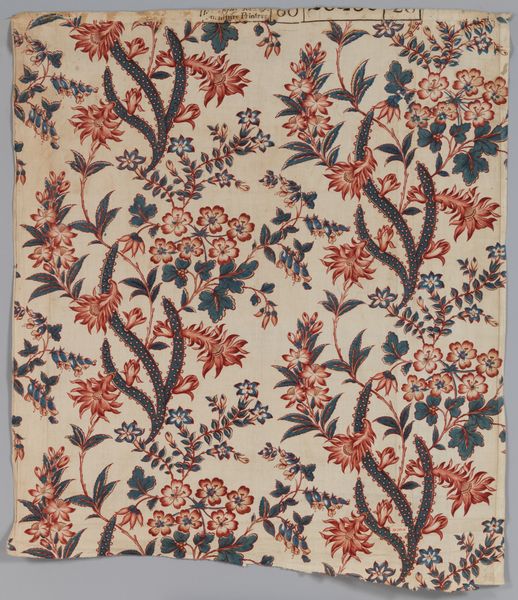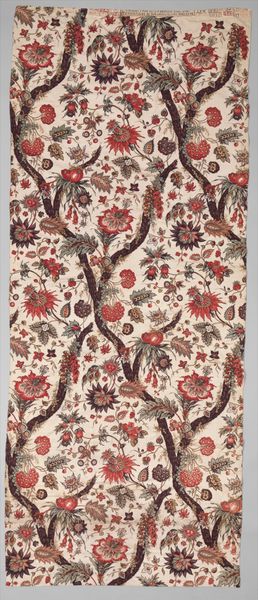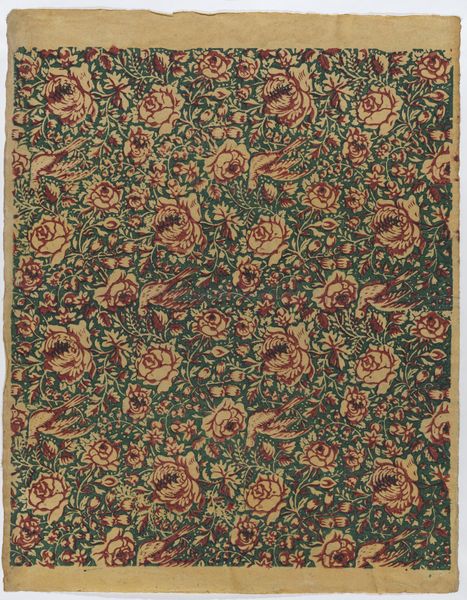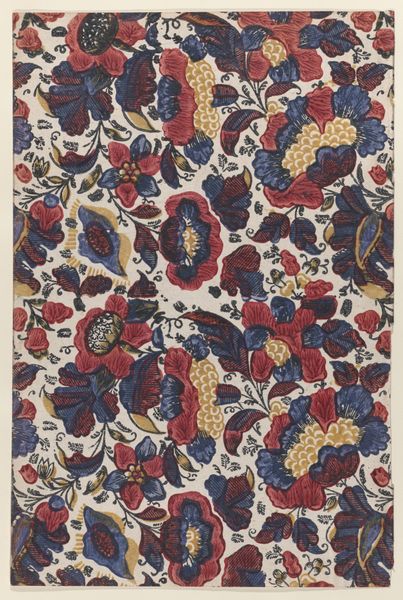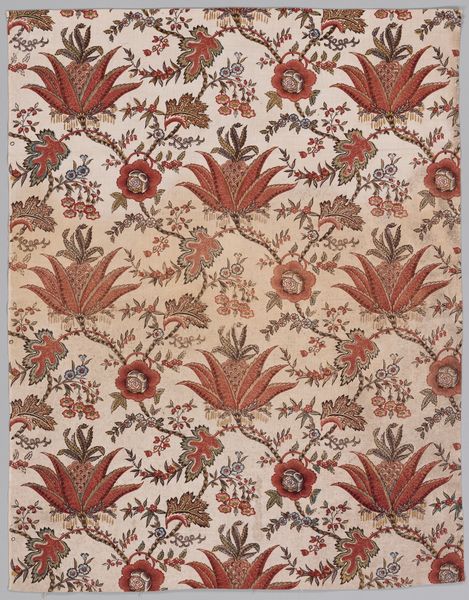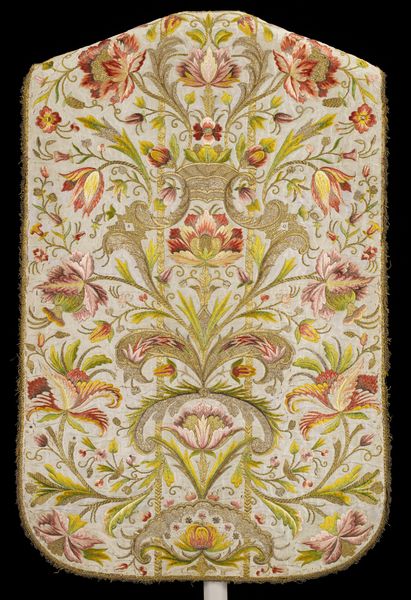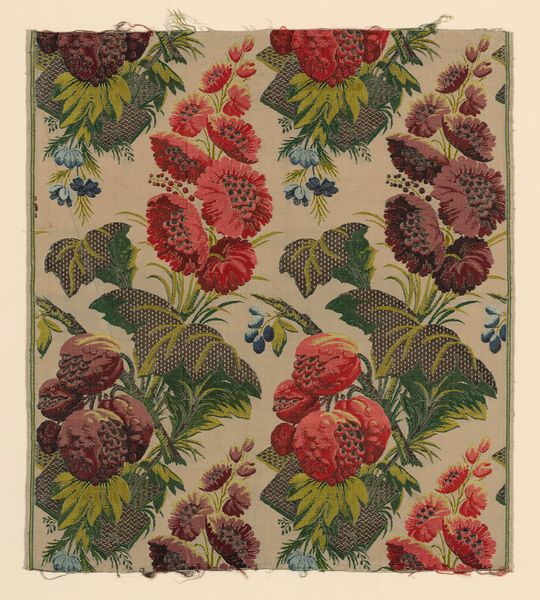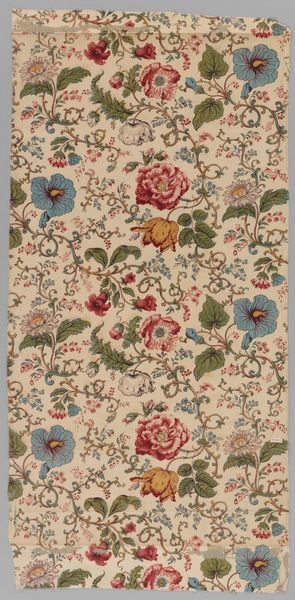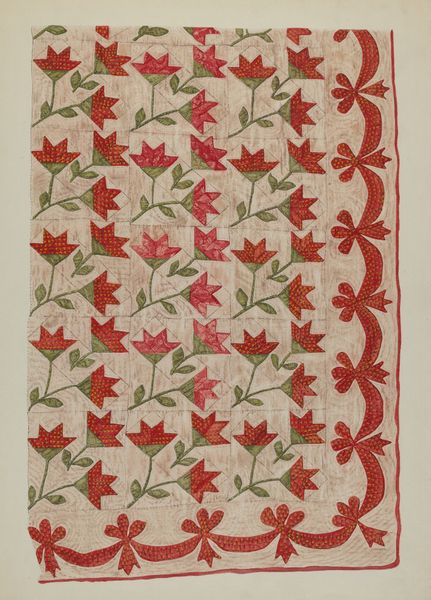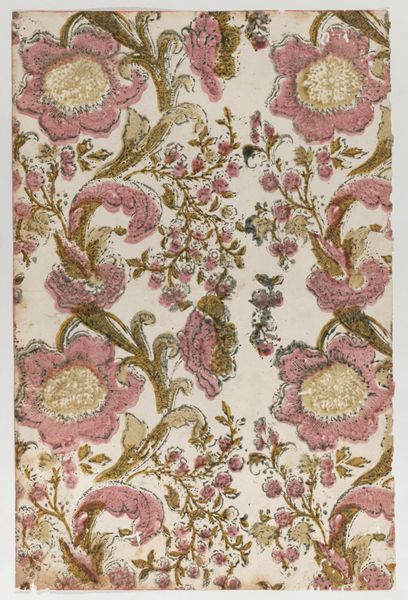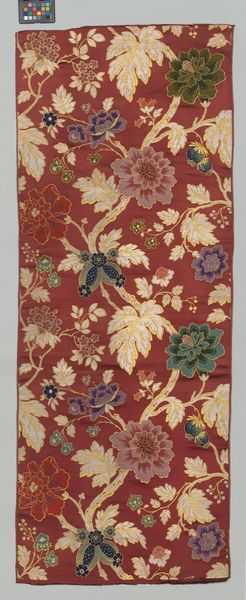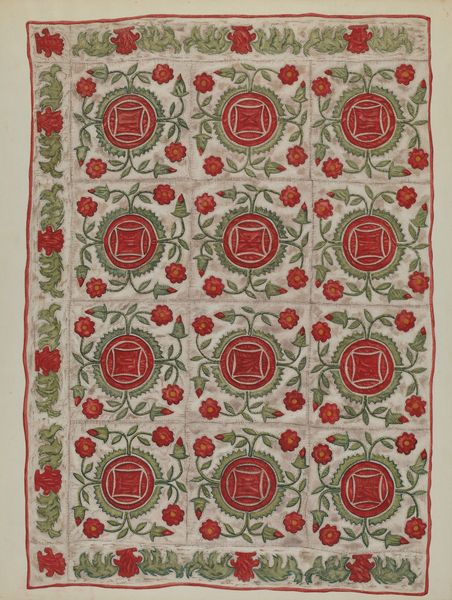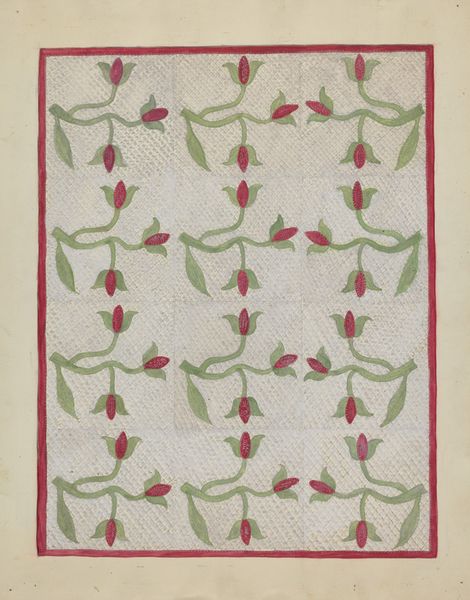
silk, textile
#
silk
#
textile
Dimensions: 85 1/2 x 22 1/4 in. (217.17 x 56.52 cm)
Copyright: Public Domain
Editor: Here we have an intriguing “Panel,” created circa the 18th century by an anonymous artist. It's textile art made from silk, currently held at the Minneapolis Institute of Art. What strikes me immediately is its elaborate, repeating floral pattern, bursting with color. What's your interpretation of this piece? Curator: Indeed. Let us focus on the artwork itself. Observe how the composition utilizes densely packed, stylized floral motifs. The interplay of red, orange, and green hues against the off-white ground generates a vibrant yet contained energy. The precision of the stitching and the high-quality silk accentuate the tactile qualities of the panel. Editor: So, it’s all about the relationships between the colors, patterns, and textures. Are there ways in which we should be thinking about this design that maybe aren’t apparent? Curator: Precisely. The meticulous repetition of the floral forms creates a structural rhythm. Note the variations in the forms of the flowers themselves; they do not attempt naturalistic representation, but rather exist as visual elements within the overall schema. How do you feel this ordered arrangement conveys a sense of visual harmony? Editor: It’s like a controlled explosion of nature! The repetition is key, grounding the wildness. So the success is more to do with its materiality rather than external symbolism? Curator: Precisely. External references might add dimensions, but focusing on the interplay between the elements gives us access to a deeper aesthetic and theoretical awareness, don’t you think? Editor: I'm beginning to appreciate the emphasis on the inherent qualities of the piece and how those create an internal harmony. Thanks for expanding my view! Curator: And thank you for guiding us through a considered analysis of this impressive textile.
Comments
minneapolisinstituteofart almost 2 years ago
⋮
It was the Italians in the 14th and 15th centuries who developed velvet weaving to the level of an art form. Technological advances, which enabled manipulation of individual pile threads, gave designers tremendous freedom to exploit the rich texture. Velvets, such as this panel which was made in Genoa, were used for everything from men's dress suits and women's ball gowns to wall coverings and upholstery fabric. Italy maintained leadership in the production area of heavy, rich opulent velvets for hundreds of years.
Join the conversation
Join millions of artists and users on Artera today and experience the ultimate creative platform.
